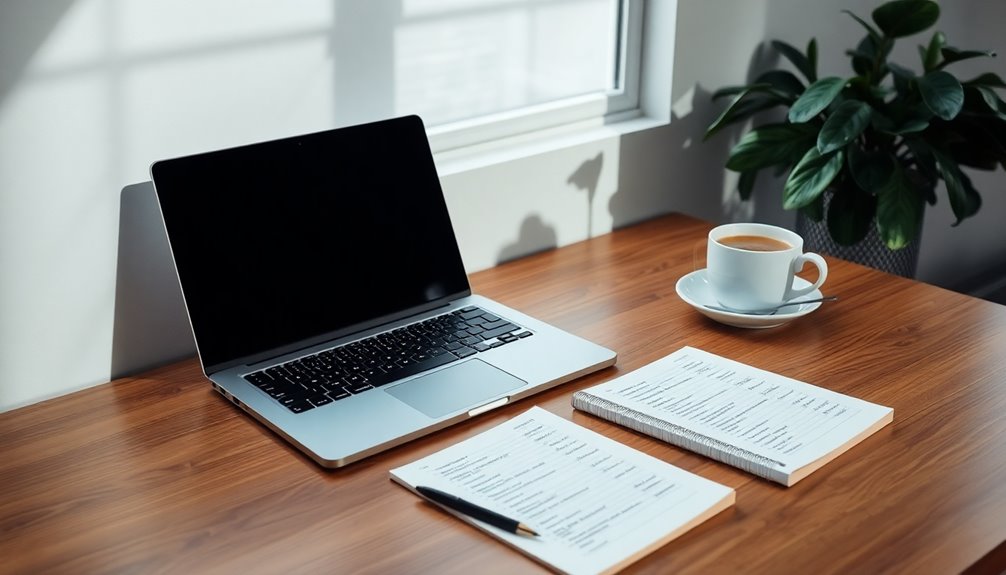To write an email that gets a response from your professor, start with a clear subject line that summarizes your intent. Use a formal salutation like "Dear Professor [Last Name]" and quickly state your purpose in the first sentence. Introduce yourself, including your name and course details, then clearly outline your questions or requests. Keep your email concise and consider using bullet points for clarity. Always express gratitude and close politely. Remember, following up is okay after a week if you haven't heard back. There's plenty more to consider to maximize your email effectiveness!
Key Takeaways
- Use a clear and specific subject line that directly indicates the purpose of your email.
- Start with a formal salutation and introduce yourself, including your name and class details.
- Clearly outline your questions or requests early in the email for easy reference.
- Keep the email concise, using bullet points if necessary to enhance clarity.
- End with a polite closing statement, expressing gratitude for their time and assistance.
Introduction

When you're reaching out to a professor, effective email communication is key, especially since face-to-face interactions aren't always possible. Your email serves as the primary method of contact, so you want to make it count.
Start with a clear subject line that gives the professor a snapshot of your request. This helps them quickly prioritize their inbox and understand the context of your message.
When writing your email, address the professor correctly, using their proper title, and keep your message concise. Include specific details about the class or topic to provide context. This way, the professor can easily grasp what you're asking or discussing.
Remember, lengthy emails can overwhelm, so aim for clarity and brevity.
If you don't receive a response in a reasonable time frame, don't hesitate to send a follow-up email. Just be polite and remind them of your original message.
Establishes Professional Communication Norms
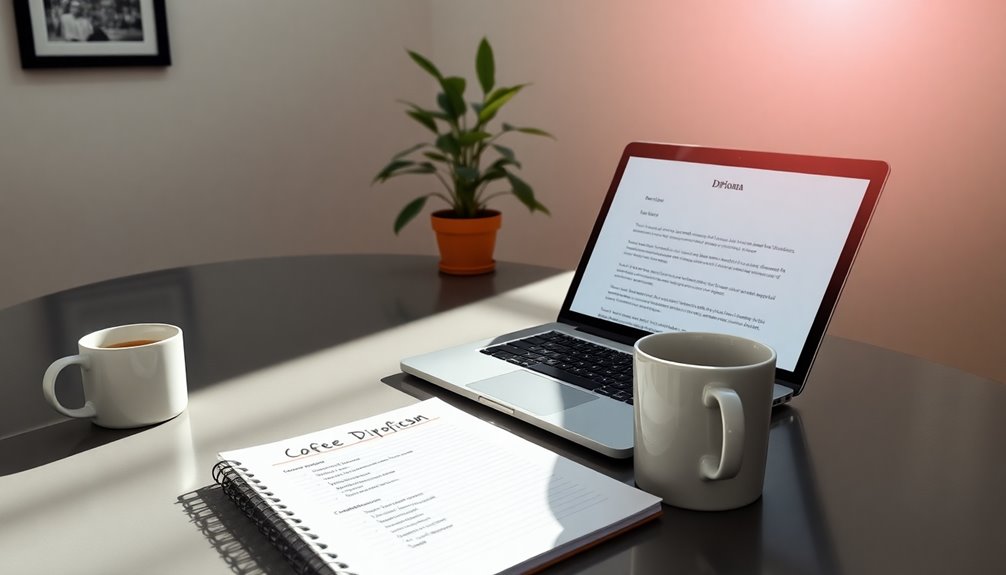
Establishing professional communication norms is essential in your interactions with professors. Start your email with a formal salutation, like "Dear Professor [Last Name]," to show respect for their position and time. Use a polite closing, such as "Best regards," to maintain professionalism.
To establish professional communication, aim for clarity and conciseness. State your purpose in the first sentence; this makes it easier for professors to understand your request and respond promptly. Always include relevant course details, such as the class name or code, to help them quickly identify your connection to the course. In some cases, professors may also appreciate a brief mention of your divorce situation if it directly pertains to your academic performance.
Avoid using overly casual language, and make sure your grammar and spelling are correct. This reflects your professionalism and helps build a positive rapport.
If you don't receive a response after a reasonable wait time—typically around a week—follow up respectfully. A gentle reminder reinforces the importance of your initial message without coming off as pushy.
Clear Subject Line
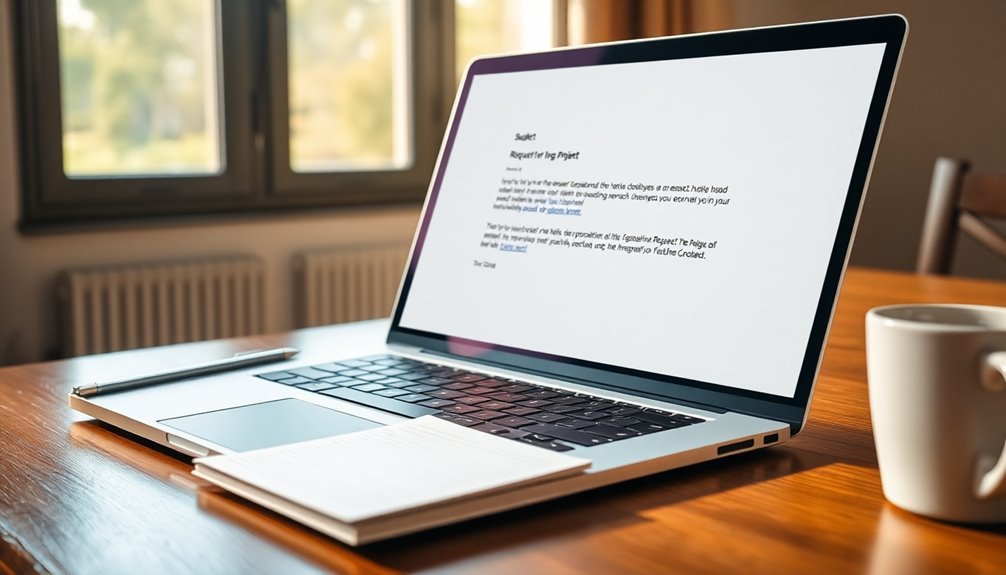
A clear subject line is crucial for effective communication with your professor. It should succinctly indicate the purpose of your email, like "Request for Extension" or "Question about Assignment Due Date." This grabs your professor's attention immediately and sets the tone for your message.
Avoid vague or generic subject lines; specificity is key. If your subject line is unclear, your email may be overlooked.
Make sure to provide details that reflect the email's content while keeping it brief—ideally under ten words. A well-crafted subject line not only conveys your intent but also shows professionalism and respect for your professor's time.
Incorporating relevant keywords helps your professor quickly identify the context of your email, making it easier for them to respond.
If you don't get a response in a reasonable time frame, don't hesitate to send a follow-up email. Just be polite and reference your original subject line to remind them of your inquiry.
Step-by-Step Guide to Inquiries
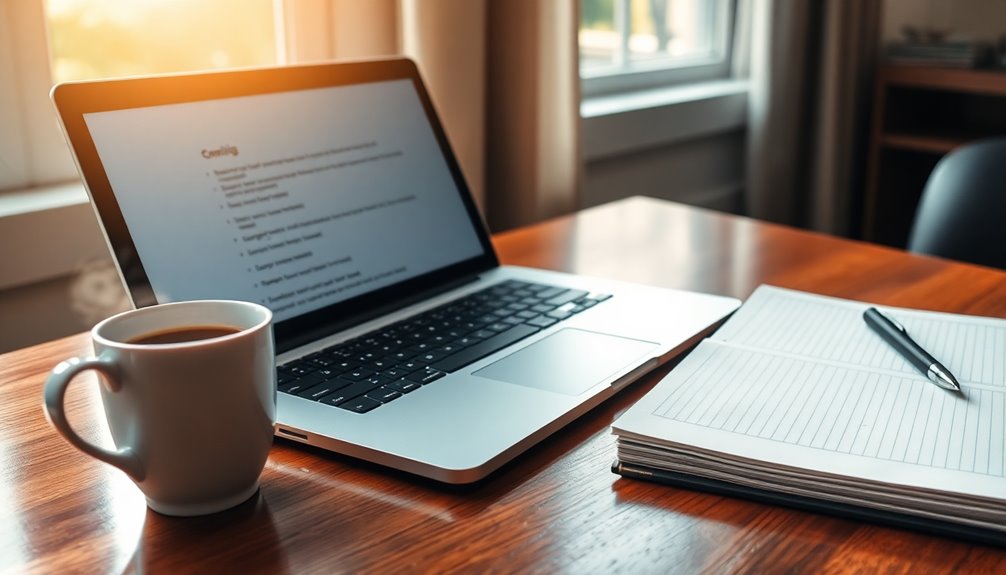
Crafting an effective inquiry email to your professor involves a few essential steps. Start with a clear and concise subject line that directly states your purpose, like "Question about Assignment Due Date." This grabs your professor's attention right away.
In the first paragraph, introduce yourself by stating your name and the class you're enrolled in. This provides context and helps your professor recall who you are.
In the second paragraph, clearly outline your question or request. Use direct language to convey your needs without unnecessary details.
Include relevant information, such as specific class details or deadlines, to help your professor understand the context and urgency of your inquiry.
Always remember to end your email with a polite closing and express gratitude for your professor's time. A simple "Thank you for your assistance" can encourage them to respond promptly.
If you don't receive a reply within a reasonable timeframe, consider sending a follow-up email. This shows you're proactive and still seeking answers.
Dos and Don'ts for Student Emails
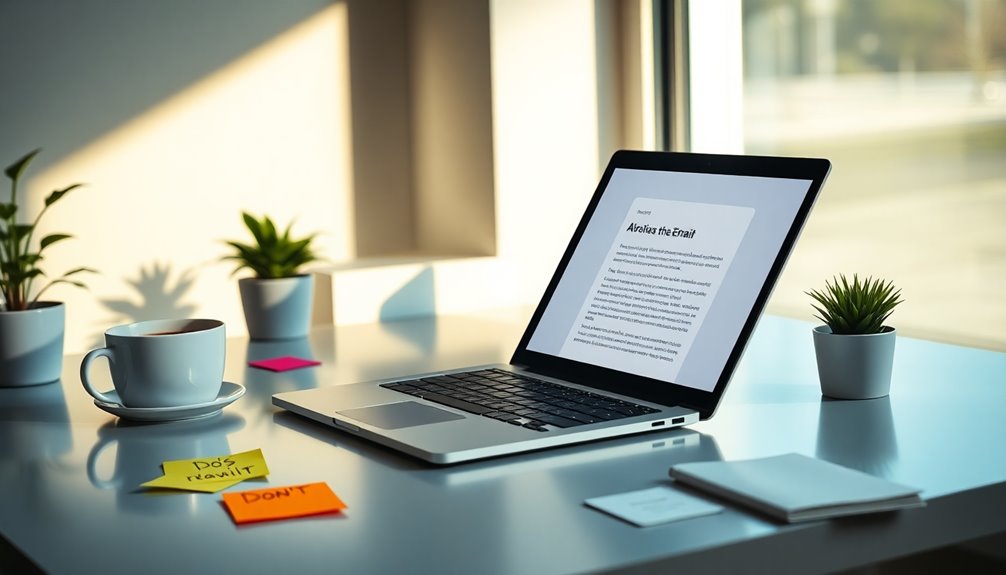
When emailing professors, it's crucial to consistently follow certain dos and don'ts to ensure your message is received positively.
First, always use a clear and concise subject line that reflects the purpose of your email, like "Request for Assignment Extension." This helps professors prioritize their responses effectively.
Don't forget to include your full name and class details in the email body. Professors manage multiple courses and students, so this context is essential for them to address your inquiry properly.
Do keep your email brief and focused. Aim for a few short paragraphs that clearly outline your request or question, showing respect for their time.
Avoid using overly casual language or informal greetings, such as "Hey" or "Hi there." Maintaining a professional tone is vital in academic communications.
Lastly, do proofread your email for grammatical errors and typos before sending it. Professionalism in your written communication reflects your respect for the professor and the seriousness of your request.
Examples of Inquiry Emails

Lastly, if you're following up after a week, send an email that acknowledges their busy schedule:
"Hi Professor [Last Name], I wanted to follow up on my previous email regarding [specific inquiry]. Thank you for your time!"
These examples can guide you in crafting your own effective emails.
Pro Tips for Writing Effective Emails
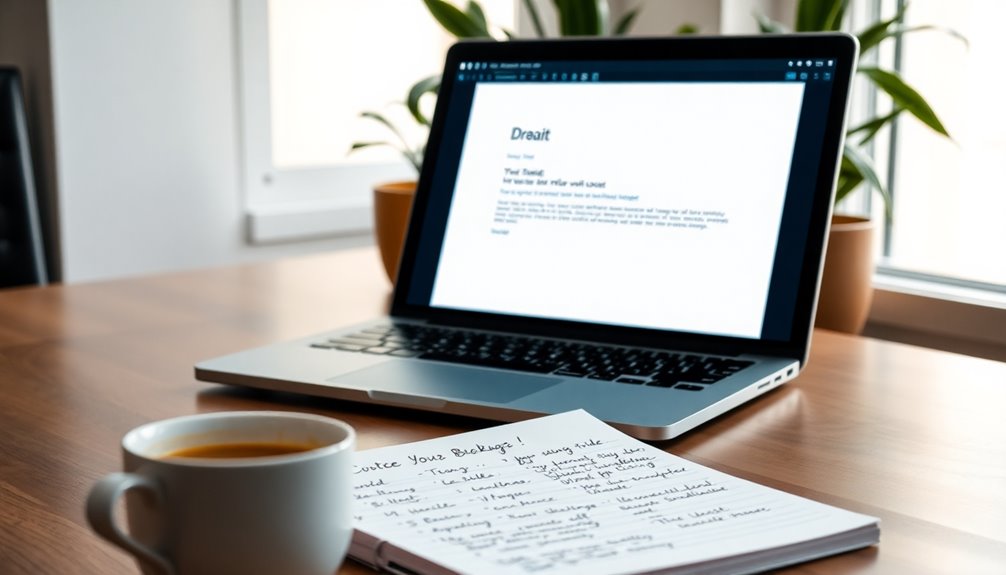
Effective emails to professors often lead to better communication and positive responses. When you write an email, start with a clear subject line that captures the essence of your message, like "Request for Extension on Assignment." This grabs your professor's attention right away.
Next, use a formal salutation, addressing them by their correct title, such as "Dear Professor Smith." This shows respect and professionalism from the get-go.
Make sure to keep the body of your email brief and focused. Aim for short paragraphs that clearly outline your request or question while providing any necessary context.
It's crucial to express gratitude for your professor's time and assistance. A simple "Thank you for your help" can foster a positive rapport, increasing the likelihood of a response.
Before hitting send, take a moment to proofread your email for any grammatical errors or clarity issues. A well-written email reflects your seriousness and respect for their time.
If you have further questions or need assistance, please let me know. I look forward to hearing from you!
Final Thoughts
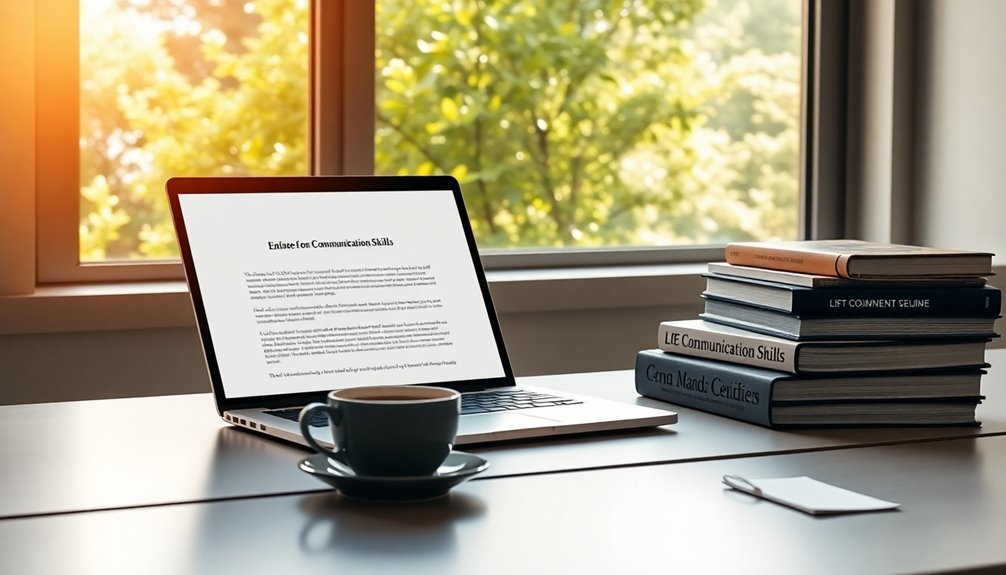
Crafting an effective email to your professor can significantly enhance your communication experience. To ensure you get a response, focus on structure and clarity.
Start with a clear subject line that reflects your intention. Professors often juggle numerous emails daily, so making your email easy to read is crucial. Additionally, maintaining emotional alignment in your communication can create a more positive interaction. A well-structured email can also demonstrate your professionalism and attention to detail.
Provide context by mentioning your class and specific questions. This helps professors quickly grasp your request, allowing them to respond faster. Keep your message concise—don't waste their time with unnecessary details.
Professionalism matters; use proper grammar and formatting to show respect for your professor's time. This small effort can encourage a favorable reply.
If you don't hear back, it's okay to follow up politely after a week. A gentle reminder creates urgency without appearing pushy, as they may have simply missed your initial email. Additionally, consider utilizing email marketing strategies to enhance your outreach and communication effectiveness.
Frequently Asked Questions
How to Politely Ask a Professor to Reply to an Email?
To politely ask a professor to reply to your email, start with a respectful greeting and mention your previous message for context.
Acknowledge their busy schedule, showing you understand their time constraints.
Keep your follow-up concise, restating your main request clearly.
Use a specific subject line that reflects your email's content.
What Do I Do if a Professor Doesn't Respond to Email?
If a professor doesn't respond to your email, wait at least a week before following up.
In your follow-up, mention the date of your original email and briefly restate your inquiry. Keep your tone respectful, showing understanding of their busy schedule.
If you still don't hear back after a second follow-up, consider visiting during office hours or using another method, like a phone call, to ensure your message gets through.
How Do You Write a Polite Follow up Email to a Professor?
To write a polite follow-up email to your professor, start with a respectful greeting and mention the date of your previous email for context.
Clearly express your hope for a response and maintain a formal tone. Be concise, focusing on your specific inquiry.
End with a clear call to action, like requesting feedback, and thank them for their time. This shows appreciation and reinforces the importance of your request.
How Do You Write a Professional Response Email?
To write a professional response email, start with a respectful greeting, addressing the recipient by their title and last name.
Acknowledge their previous message and thank them for their time.
Clearly state your purpose for replying while keeping it concise.
Use a polite and formal tone throughout, avoiding casual language.
End with a courteous closing remark, including your full name and relevant contact information to ensure easy communication.


